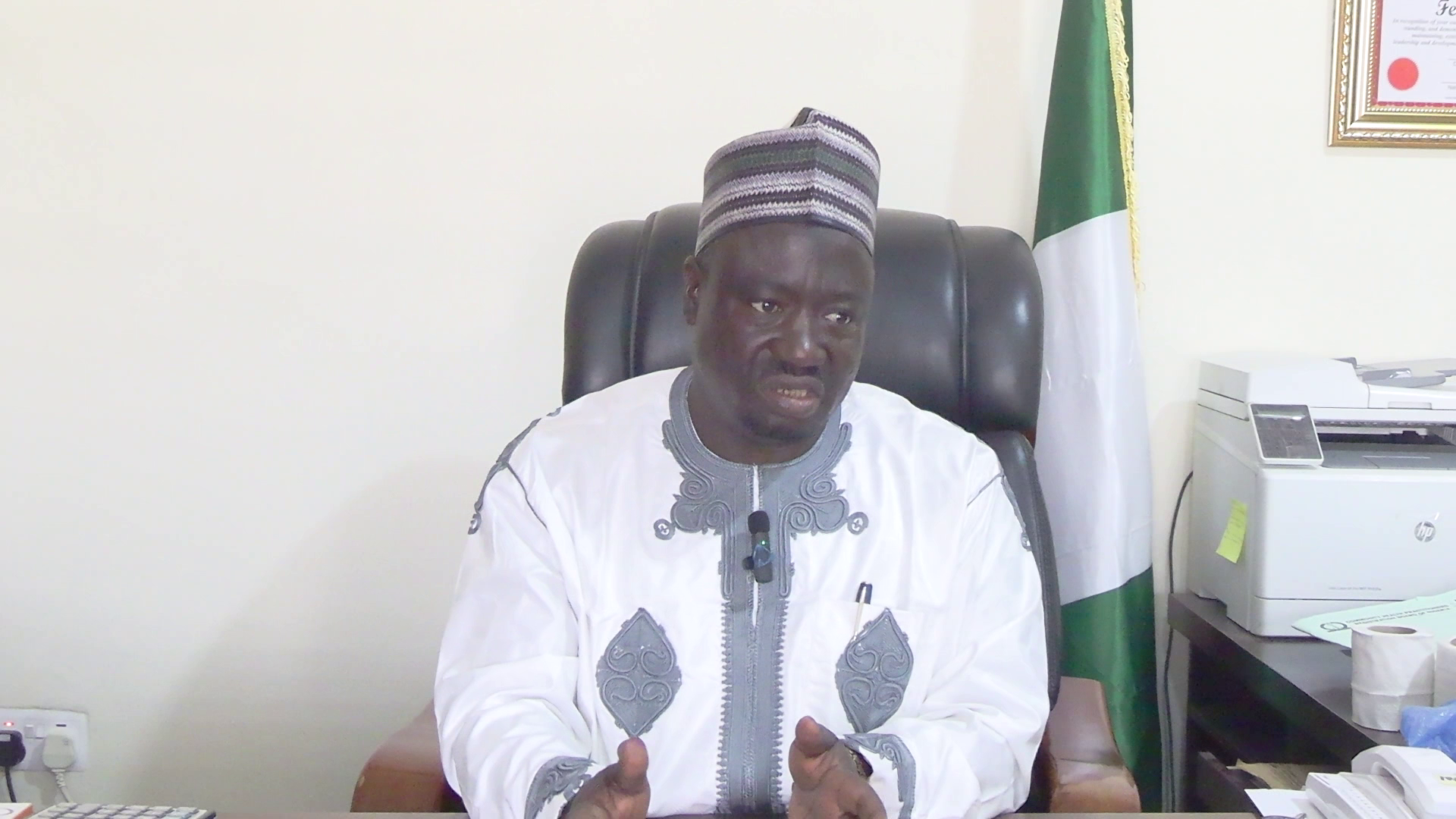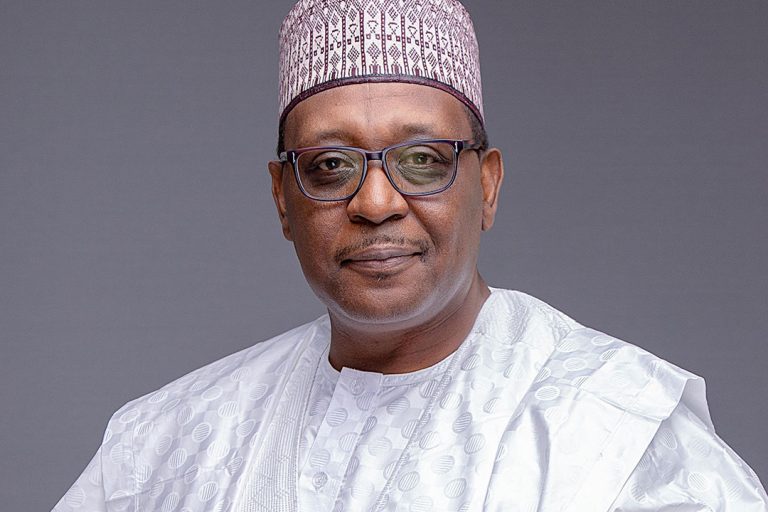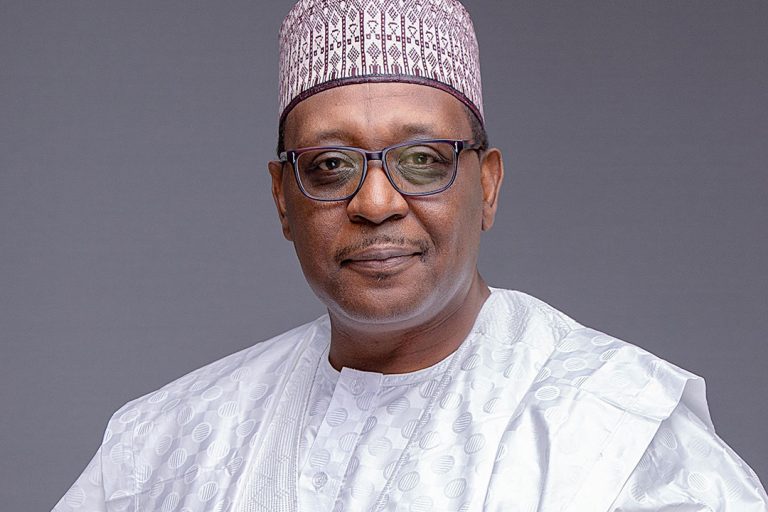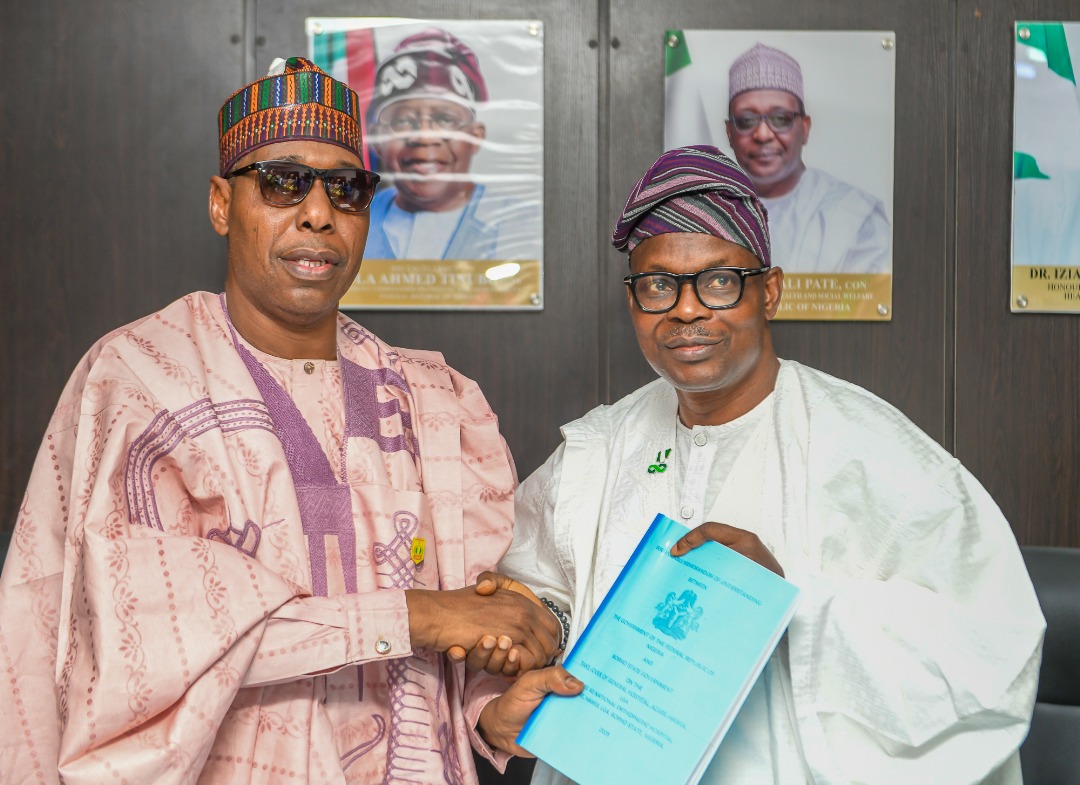
Right place must be put on the right horse. Misplacement of resources or personnel leads to inefficiency and poor outcomes – CHPRBN Registrar Alhaji Idris
By Fatima Saka
Few individuals have left as significant an impact on the health sector, particularly in rural areas, as community health practitioners. Their journey stems from a vision to ensure wellness and effective service delivery at the grassroots level.
EXCERPT:
The Community Health Practitioners Registration Board of Nigeria (CHPRBN) was established on November 24, 1992, with a mandate to set standards for the knowledge and skills required in the profession, conduct examinations, and award certifications to qualified candidates.
In this exclusive interview with Distinct News, Alhaji Bashir Idris, the Registrar and Chief Executive Officer of CHPRBN, shares insights into the board’s mission, the essential qualities of a certified community health practitioner, and their pivotal role in Nigeria’s healthcare system, driven by a commitment to reducing the burden of infant and maternal mortality.
Meet the CHPRBN Registrar
Alhaji Bashir Idris, serving as the board’s registrar since 2021, hails from Kafanchan, Kaduna State. His academic journey reflects a steadfast commitment to excellence, with studies at prestigious institutions including the University of Washington and Ladoke Akintola University of Technology. Holding advanced degrees in Community and Public Health, he is currently pursuing a PhD in Community Health, underscoring his dedication to lifelong learning and advancing expertise in the field.
What are the requirements and process for registering as a certified community health practitioner in Nigeria?
Community health practitioners must possess specific core qualities to excel in their roles. CHPRBN, as a statutory agency under the Federal Ministry of Health, plays a critical role in regulating the training and certification of these professionals.
Regulating training involves a comprehensive framework, this encompasses setting standards for academic and practical requirements, ensuring adherence to best practices, and fostering a culture of continuous improvement among practitioners.
CHPRBN has embraced digital advancements to improve operations and reshape community health services, focusing on leveraging technology has streamlined regulatory processes and enhanced access to training materials, examinations, and certifications.
The Board’s Core Mandate remains steadfast in its commitment to ensuring that community health practitioners meet the highest standards of professionalism and competence. Our mission is to provide regulatory oversight that guarantees quality in the training of practitioners across Nigeria.
The importance of support from stakeholders, particularly government agencies and development partners, to address challenges such as inadequate funding and human resources. “With sufficient support, we can expand our reach and impact, ensuring that every community has access to skilled health practitioners.
What Are the Requirements and Processes for Registering as a Certified Community Health Practitioner in Nigeria?
The process of becoming a certified community health practitioner in Nigeria involves several key steps, overseen by the Community Health Practitioners Registration Board of Nigeria (CHPRBN). This board is tasked with regulating training, monitoring practitioners, conducting examinations, licensing professionals, and maintaining a national register of practitioners.
The board regulates four core categories of community health practitioners:
1. Junior Community Health Extension Workers (JCHEWs)
2. Community Health Extension Workers (CHEWs)
3. Community Health Officers (CHOs)
4. Bachelor of Community Health Science (BCHS) Graduates
READ ALSO: Badagry ready for proposed Deep Seaport – Chamber
2024 National Oral Health Week: FG Intensifies Efforts to Eradicate NOMA in Nigeria
The CHPRBN ensures that these professionals are trained and certified to meet national standards, enabling them to provide effective community healthcare services across Nigeria.
Training and Accreditation, before an individual can register as a community health practitioner, they must undergo approved training. The CHPRBN accredited institutions such as Colleges of Health Sciences, Schools of Health Technology, and teaching hospitals. These institutions must meet specific requirements and pass a rigorous accreditation process based on the board’s checklist.
The training programs vary depending on the level of certification being pursued:
Junior Community Health Extension Worker (JCHEW): A two-year program.
Community Health Extension Worker (CHEW): A three-year program.
Community Health Officer (CHO):
Two-Year CHO Program: For CHEWs who wish to advance.
One-Year CHO Program: For individuals with a higher degree (e.g., a BSc in Community Health or related fields).
Bachelor of Community Health Science (BCHS): A full degree program offered in accredited universities.
Admission Requirements
The admission criteria for these programs align with standard educational requirements in Nigeria:
1. A minimum of five credits in relevant subjects, including English, Mathematics, and core science subjects, such as Biology, Chemistry, and Physics.
2. Applicants must apply to accredited institutions and meet the specific entry requirements for their chosen program.
Certification Process
Once an individual completes the required training, they must:
1. Pass the CHPRBN-administered examinations.
2. Obtain a license to practice as a certified community health practitioner.
3. Be listed on the national register maintained by the CHPRBN.
How Does the CHPRBN Ensure Continuous Professional Development and Compliance with Standards Among Registered Practitioners?
The Community Health Practitioners Registration Board of Nigeria (CHPRBN) employs a comprehensive approach to maintain high standards and ensure continuous professional development (CPD) among registered practitioners.
The CHPRBN ensures compliance with professional standards by regulating the training of community health practitioners through accredited institutions. A detailed checklist is applied during the accreditation process to verify that the institution meets the necessary criteria.
The Schools must sign Memorandums of Understanding (MOUs) with health facilities, such as primary health centers (PHCs) and general hospitals, for hands-on training.
An attached clinic within the school premises is mandatory for real-world learning experiences.
Specific numbers of books, journals, and demonstration equipment must meet the CHPRBN’s requirements to achieve full accreditation. Institutions falling short may be granted provisional accreditation until they address the gaps.
CHPRBN conducts periodic monitoring of accredited institutions to ensure continued compliance with established standards. Inspections assess whether facilities, equipment, and personnel remain adequate and up-to-date.
What Disciplinary Measures or Processes Are in Place for Handling Cases of Professional Misconduct Within Community Health Practice?
Discipline is a cornerstone of the CHPRBN. Maintaining professional ethics and ensuring compliance with established standards are crucial to safeguarding public health.
The CHPRBN has established a comprehensive code of ethics and etiquette that governs the conduct of all registered community health practitioners. These guidelines clearly define the “do’s and don’ts” of the profession, including:
1. Timely License Renewal: Practitioners are required to renew their licenses periodically and comply with continuing professional development (CPD) requirements.
2. Punctuality and Discipline: Practitioners must adhere to schedules, maintain discipline, and execute duties with professionalism.
READ ALSO: Four Killed in Terrorist Attack on Immigration Facility in Kebbi State
International American Court Sentences President-Elect Donald Trump Without Fine
3. Adherence to Standing Orders: Practitioners must follow standardized clinical protocols and maintain proper hygiene in workspaces.
4. Uniform Compliance: Practitioners are expected to wear appropriate uniforms to maintain professionalism and identification.
The CHPRBN conducts regular monitoring of Facilities, unannounced inspections of health facilities ensure practitioners adhere to ethical and professional standards.
Routine assessments verify that schools and colleges follow proper training protocols and maintain compliance with board regulations.
If a practitioner is found in violation of the ethics and etiquette of the profession, the following sanctions may be imposed:
1. Withdrawal of License or Certification: In severe cases, a practitioner’s license or certificate may be revoked.
2. Demotion or Suspension: Practitioners may face reduced responsibilities or temporary suspension from practice.
3. Other Penalties: Depending on the gravity of the misconduct, additional actions may include fines or mandatory retraining.
Each case of misconduct is thoroughly reviewed in accordance with the board’s disciplinary procedures. Practitioners are given the opportunity to present their defense before any decision is made.
The CHPRBN also ensures balance by recognizing and rewarding exceptional performance. Practitioners who consistently uphold professional standards and deliver exemplary service are acknowledged, creating a culture of motivation and excellence.
Through strict enforcement of ethics, unannounced monitoring, and a fair disciplinary process, the CHPRBN strives to uphold the integrity of community health practice in Nigeria. The board’s commitment to regulation ensures that practitioners provide safe and effective health services while maintaining public trust.
How Is the CHPRBN Aligning With President Tinubu’s Agenda on Health to Improve the Well-being of Nigerians?
The CHPRBN is committed to advancing President Tinubu’s health agenda by addressing key challenges and implementing innovative solutions to strengthen community health services across Nigeria. One of the major issues in community health is the shortage of trained practitioners. To tackle this, the CHPRBN has:
1. Strategic Recruitment Plans: Advocated for increased recruitment and deployment of community health workers to underserved areas to bridge the gap in primary healthcare delivery.
2. Capacity Building: Ensured continuous training and professional development of practitioners to enhance their skills and adaptability to emerging health challenges.
3. Strengthening Training Institutions: Enhanced accreditation processes to ensure schools and colleges meet the required standards for producing competent health workers.
In alignment with President Tinubu’s vision of renewal and improvement, the CHPRBN has made significant strides in infrastructure development:
Upon assuming office in 2021, I sourced funds beyond traditional avenues to acquire a permanent office building for the board. This edifice stands as a testament to the board’s commitment to self-reliance and resourcefulness.
The new office provides modern facilities to support the board’s operations and serve community health practitioners effectively.
Streamlining License Production, previously, outsourcing the production of practitioner licenses created inefficiencies and delays. To address this:
The CHPRBN acquired advanced equipment to produce practitioner licenses within the organization. This initiative has significantly reduced processing time.
Practitioners can now renew their licenses online through the board’s portal. Licenses can be processed within 10-20 minutes or delivered directly to practitioners’ homes, enhancing convenience and efficiency.
The board has adopted a forward-thinking approach to meet the demands of modern healthcare:
1. Digital Transformation: Leveraged technology to make license verification and renewal seamless, ensuring transparency and accessibility.
2. Focus on Results: Emphasized accountability and effectiveness, encouraging all CEOs and leaders in the health sector to think creatively and execute solutions that align with national health goals.
The CHPRBN is fully aligned with the president’s vision to renew and strengthen Nigeria’s healthcare sector. Through innovative problem-solving, resource optimization, and dedication to community health, the board continues to contribute significantly to improving health outcomes nationwide.
These efforts highlight the CHPRBN’s role as a driving force in actualizing the president’s mandate, ensuring that community health practitioners are well-equipped to deliver quality healthcare services to all Nigerians.
It is yet another testament to Mr. President’s renewal agenda to change the narrative and foster transformation. When I assumed office, I found only two or three functional vehicles. I prioritized addressing this challenge and was able to procure about eight additional vehicles, including two official cars and four buses. The institute now has its own bus, and I repaired grounded vehicles, ensuring they are back on the road.
READ ALSO: TCM saddened by FG’s plan to increase Telecomm tariffs
Nigeria’s Mobile Data Costs, Lowest in West Africa – Report Reveals
Given that we operate across all states, including Abuja, these logistical improvements have significantly enhanced movement, monitoring, and supervision. This achievement aligns with Mr. President’s vision for renewal, and we are proud to have made such progress.
Another area of focus was the outdated standing order and training curriculum, which had not been reviewed in nearly ten years, despite the mandate for a review every five years. I am pleased to report that, with the support of USAID, we have successfully updated both the standing order and the training curriculum.
The revised materials address emerging challenges such as COVID-19 and other public health emergencies, ensuring that our training remains relevant and effective. The September launch of the updated standing order is a significant milestone, reflecting our commitment to renewal and continuous improvement.
Introducing Annual Operational Plans
When I joined, there was no structured annual operational plan in place. I initiated and implemented this system, ensuring that, since my appointment as CEO, we have developed and adhered to annual operational plans. These plans serve as the organization’s budget, guiding our operations and ensuring alignment with our goals.
Improving Work Environments
A conducive work environment is essential for productivity. To address this, I ensured the provision of new chairs, tables, and office furniture for staff. Creating a comfortable and well-equipped workspace has greatly enhanced staff morale and efficiency.
In alignment with the federal government’s mandate and international best practices, I have overseen the digitization of our processes:
Student exam registration, indexing, and related activities are now conducted electronically.
This year, the national probation exam will be conducted via Computer-Based Testing (CBT), the gold standard for examinations worldwide.
Our robust digital portal streamlines activities, making them seamless and efficient.
These achievements demonstrate our commitment to renewal and innovation, reflecting the transformative mandate of Mr. President. By addressing logistical, operational, and infrastructural challenges, we have laid a solid foundation for sustainable growth and excellence in community health practice.
What strategies are being implemented to address the shortage of community health workers in rural and underserved areas and how are community health practitioners trained to address emerging health challenges such as non-communicable diseases and mental health issues?
Addressing the shortage of community health workers in rural and underserved areas requires proper planning and execution. To achieve meaningful results, as the saying goes, “the right place must be put on the right horse.” Misplacement of resources or personnel leads to inefficiency and poor outcomes.
Community health workers serve as essential middle-level manpower, trained specifically to operate in primary health care centers and clinics. However, if they are not deployed to the areas where their services are most needed, results cannot be achieved.
While Nigeria has an adequate number of trained community health workers, the core issue lies in their absorption into the system. Many remain unemployed, underutilized, or employed as casual workers. Casual employment undermines stability, as these workers can easily leave when offered better opportunities elsewhere, further exacerbating the shortage.
Advocating for State Government Action
State governments must take proactive measures by implementing robust recruitment and retention plans. Many health workers retire or pass away from natural causes, leaving critical gaps. It is imperative to address these gaps through planned replacement strategies.
Currently, the problem is not the lack of trained community health workers but the absence of proper absorption and deployment mechanisms. Building health facilities and stocking them with drugs is insufficient if there are no skilled personnel to provide services.
State governments need to prioritize the recruitment and deployment of community health workers to underserved areas. By doing so, the right personnel will be in the right places, resulting in improved healthcare outcomes for rural and underserved communities.
What measures are in place to improve maternal and child health services in remote communities?
When it comes to improving maternal and child health services, there has been considerable progress, especially in addressing the challenges faced in remote communities. The situation in Nigeria, however, remains concerning, particularly with respect to maternal and child health indicators.
I must commend the Coordinating Minister of Health, Professor Ali Pate, for his efforts in driving improvements in this area. He, along with other ministers within the ministry, has made significant strides. His work deserves recognition, and I offer him my sincere gratitude for his contributions.
However, as community practitioners, we also have a vital role to play. We have been doing our best to contribute to these improvements. One of our key initiatives has been focused on increasing the production of human resources for health. Under the guidance of the Honorable Minister, we have been encouraged to ramp up the production of health professionals. To this end, we have successfully increased our admission quotas.
Additionally, we have worked hard to enhance our training efforts, ensuring that the right personnel are in place to support maternal and child health initiatives. Our personnel are actively involved in providing care in various maternal and child health centers, including PNC clinics and general hospitals across Nigeria. When addressing this issue, we cannot ignore the pivotal role our community workers play.
We have also placed emphasis on continuous learning, training, and retraining, along with effective monitoring. Training alone is not enough; it must be followed up with diligent monitoring to ensure that our workers are applying their skills effectively in the field.
Despite these efforts, we still face significant challenges. One of the primary issues is the lack of community workers on the ground, particularly in rural areas. Most of our health professionals, such as doctors and nurses, are concentrated in urban centers. The real challenge lies with state and local government authorities, who must take the lead in recruiting more community workers.
If the government prioritizes recruitment at the local level, the rates of maternal and infant mortality could see a drastic reduction. During monitoring visits, we often observe that some individuals working in maternal health facilities do not possess professional qualifications, which is a serious concern. It’s essential that we have properly trained and certified community workers in every PNC, as the absence of these professionals can lead to avoidable consequences.
Therefore, I am strongly advocating for increased recruitment of community workers to help reduce the high maternal and infant mortality rates in remote areas. We have the capacity to address these issues, but we need the necessary workforce on the ground to make a lasting impact.
Lastly, infrastructure plays a critical role. Adequate infrastructure in PNCs is vital to ensuring that maternal and child health services are delivered effectively. With the right resources, we can make meaningful progress and transform the current narrative.
In summary, while there has been substantial progress, there is still much work to be done. The shortage of community workers continues to be a challenge, but with targeted efforts in recruitment, training, monitoring, and infrastructure, we can significantly improve health outcomes in remote communities.
What are the challenges your organization is currently facing?
Our organization, like many others in Nigeria, is facing several challenges. First and foremost, we have financial constraints. It’s a reality that even the Nigerian government struggles with funding, so naturally, an organization like ours faces similar difficulties. Adequate funding is critical for the effective operation of our programs and initiatives.
Secondly, we have challenges with human resources. As I mentioned earlier, we operate nationwide, but the number of staff we have is insufficient to cover all the areas effectively. For instance, when our staff is stretched thin, it affects our ability to conduct monitoring, training, and other essential activities.
Additionally, logistical challenges compound our issues. While I made strides by purchasing vehicles for all our geopolitical offices to facilitate effective monitoring and supervision, maintaining these vehicles, fueling and repairing them requires funding, which is another challenge.
Another issue is the lack of infrastructure. While we have offices in several geopolitical zones, there are areas where we don’t have adequate office space, forcing some staff to operate under suboptimal conditions. This impacts their efficiency and willingness to work in certain regions.
Funds remain the most critical issue. With adequate funding, we could strengthen our training programs, improve monitoring, enhance learning procedures in schools, and organize more training sessions. Additionally, we could open more offices and ensure better coverage across the 12 states and Abuja.
While the government has been supportive, we still need more resources to achieve our goals effectively. Addressing these challenges will enable us to strengthen our operations and deliver the desired results.
What are your messages to Nigerians and your vision for the board?
My message to Nigerians, especially my professional colleagues in community health, is that we have a responsibility to change the troubling health indices in our country. I feel deeply concerned whenever I see the high rates of infant and maternal mortality. I want to challenge my fellow practitioners to rise to the occasion this year and make a significant difference.
We have the training, capacity, and skills to address these challenges, yet many communities remain underserved. We must take proactive steps to reduce these alarming health indicators because we have the power to save lives. I am not saying that efforts haven’t been made, but there is a need for improvement. Let us recommit ourselves to our duties, return to the communities, and do the right thing.
READ ALSO: TCM saddened by FG’s plan to increase Telecomm tariffs
Troops Dismantle Terrorist Camps, Rescue Hostages in Zamfara State
It is also essential to recognize that while we are doing our best, many of these issues arise where there are no practitioners present. For instance, a woman in labor cannot be expected to deliver safely if there is no skilled health worker available to assist her. These are not failures of practitioners but rather gaps in human resources that we must address. Where community health practitioners are present, we have seen remarkable progress. We need to ensure that every facility is adequately staffed to provide the care needed.
My Vision for the Board and Nigeria!
My vision is to see Nigeria significantly reduce the burden of infant and maternal mortality. Every child, from birth to adulthood, should have access to quality and effective healthcare services in every community. Similarly, every woman, regardless of her socio-economic status or location, must have access to safe and reliable healthcare.
To achieve this, I call on all levels of government, particularly local government chairmen, to prioritize the recruitment of community health practitioners. These professionals must be deployed to primary healthcare centers where they can make the most impact. I am confident that with sufficient personnel in place, we can transform the health outcomes of our communities within a year.
Allow me to also express my gratitude to the Coordinating Minister for Health and the Minister of State for Health for their unwavering support and commitment to the board. Their dedication has enabled us to produce more effective community health practitioners who are ready to address Nigeria’s health challenges. With continued partnership and support, I believe we have the strength and capacity to create lasting change in our health sector.





